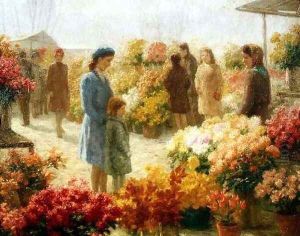Hendrik Heyligers Paintings
Hendrik (Henri) Heyligers was a Dutch artist known for his paintings, watercolors, and drawings. Born on January 24, 1877, in Amsterdam, Netherlands, Heyligers showed an early talent for the arts. Trained at the Rijksakademie van beeldende kunsten (State Academy of Fine Arts) in Amsterdam, he was a student of August Allebé, a prominent Dutch painter and teacher of that era. Allebé's influence is evident in Heyligers' early works, which are marked by a precise handling of line and form.
During his career, Heyligers traveled extensively, which had a significant impact on his artistic development. He lived for some time in Paris, where he was exposed to the evolving trends of French art, including Impressionism and Post-Impressionism. These styles influenced his use of color and brushwork, leading to a more loose and expressive approach in his later works.
Heyligers was a versatile artist, adept in various subjects including landscapes, still lifes, portraits, and genre scenes. His style evolved throughout his career, reflecting the changing artistic trends of the late 19th and early 20th centuries. However, he is most commonly associated with the Amsterdam Impressionism movement, which was characterized by vivid colors and dynamic brushstrokes. This movement was a regional variant of Impressionism that emerged in the Netherlands and included other notable artists such as George Hendrik Breitner and Isaac Israëls.
The artist's work was well-received in his time, and he exhibited with various art societies, including Arti et Amicitiae (an influential art society based in Amsterdam) and the Pulchri Studio in The Hague. His paintings were included in numerous exhibitions throughout the Netherlands and abroad, helping to cement his reputation as a respected member of the Dutch artistic community.
Hendrik Heyligers continued to paint throughout his life, maintaining the quality and integrity of his work until his later years. He passed away on April 9, 1953, in Voorburg, Netherlands. Today, his works can be found in several Dutch museums and are collected by enthusiasts of Dutch Impressionism and early 20th-century European art.
